For many of us, the first step in planning a vacation is to ensure you have enough days of leave available. From checking the company’s policy to negotiating with coworkers to cover your shifts, securing those precious days off often requires planning and a bit of luck. However, some brave souls know how to demand their well-deserved leave of absence.
One employee of a 24-hour news agency, for instance, disclosed on Reddit how they strategically planned a two-month vacation after their company wouldn’t let them carry just one day of paid time off into the next year. Keep reading to know how the author used malicious compliance to take full advantage of their vacation days.
Sometimes, company PTO policies can be quite tricky to navigate, especially when it comes to carryover limits and holiday scheduling
Image credits: Matheus Bertelli / pexels (not the actual photo)
An employee cleverly used their accumulated PTO to take an extended two-month vacation after management refused to let them carry over an extra day off
Image credits: SHAHBAZ ZAMAN / pexels (not the actual photo)
Image credits: Anna Tarazevich / pexels (not the actual photo)
Image credits: Go-Nuts-27
The author provided additional details about their situation
Paid time off is beneficial for both employer and employee
Every now and then, we all need a vacation from our daily schedule to rejuvenate, reset, and refocus on our goals. If we don’t take occasional breaks from work, we might feel burned out. A 2020 analysis from Gallup states that 28% of employees report experiencing burnout “very often” or “always” at work, while 76% of workers report experiencing it at least occasionally.
Whether you want to go on a relaxing holiday, spend quality time with family, or simply do nothing at all, we all need time off to enjoy the good things in life. Interestingly, a Glassdoor survey found that employees valued paid time off (PTO) and vacation more than salary increases.
PTO is defined as the amount of time, in either days or weeks, that a person is legally allowed to take off from work and still be compensated by their employer. It is also called statutory leave and annual leave. While it might appear costly for companies, the return on investment for offering PTO is significant.
When a person gets paid time off, they usually don’t miss work without giving notice. As they know they can take leaves, they plan in advance for it. Additionally, PTO helps improve employee satisfaction, which can lead to higher retention rates. This is because it makes employees feel valued, and they are also able to enjoy a better work-life balance.
Image credits: Ketut Subiyanto / pexels (not the actual photo)
Each country has its own rules for paid time off
Time away from work often leads to fresh perspectives and ideas. Employees often return from vacation with better and more innovative solutions to problems. However, PTO policies vary widely across different parts of the world. The European Union mandates a minimum of four weeks of paid vacation per year, and that doesn’t include public holidays.
Typically, a lot of nations go above and beyond this need and sometimes even pay you on national holidays. For instance, people in France are entitled to a minimum of five weeks of paid vacation annually. French people can take more than a month of vacation days. However, they don’t get paid for all public holidays.
In Germany, companies usually have a five-day work week, and workers receive at least 20 days of paid vacation. Moreover, people working there get paid sick leaves if they have a valid doctor’s note. Depending on which part of the country you are, you usually get 9 to 13 public holidays.
People in the United Kingdom are entitled to 28 days of paid leave per year. However, this might also include public holidays. When it comes to the United States, they lag behind many countries in providing and utilizing this benefit. This means that workers sometimes might work for months or even years without a well-deserving break.
A recent Forbes article states that 28 million U.S. employees lack paid time off benefits, despite about one-third of workers considering mandatory PTO one of the most important perks. While there is no guaranteed PTO in the U.S., the average American worker gets approximately 11 days of paid vacation per year.
Every employee needs time to attend to their personal needs, and having PTO not only helps relax but also helps them stay present and engaged while at work. In this particular case, the author had to get creative to ensure that they were able to fully utilize their well-deserved leave of absence. Does your company give you paid time off? How many days do you get?
Image credits: Anete Lusina / pexels (not the actual photo)

 Dark Mode
Dark Mode 

 No fees, cancel anytime
No fees, cancel anytime 








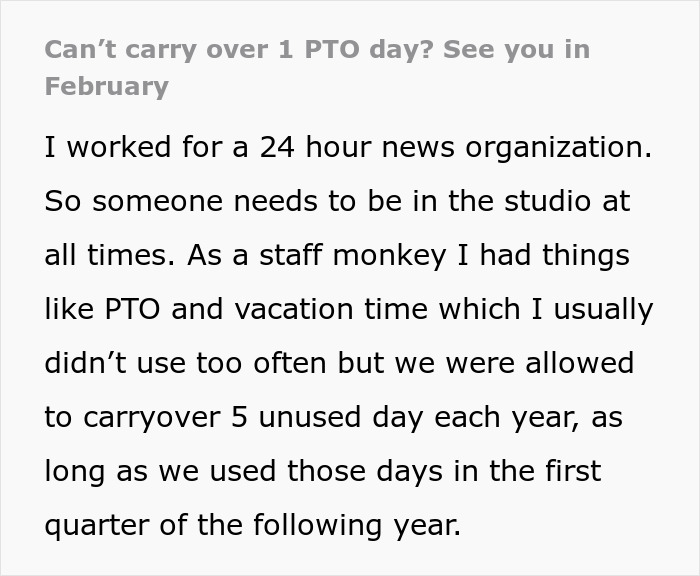
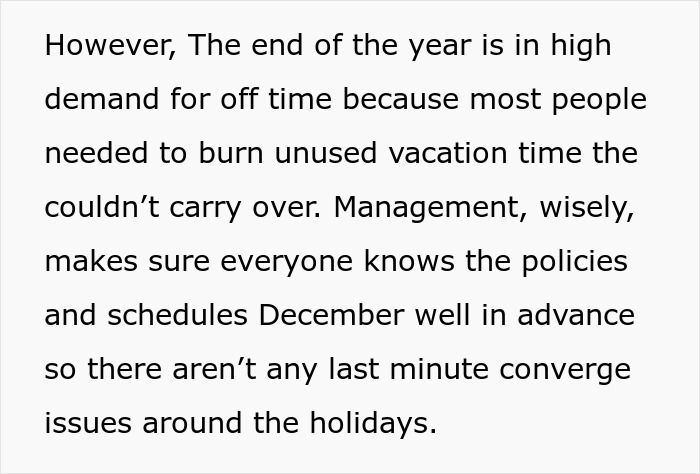
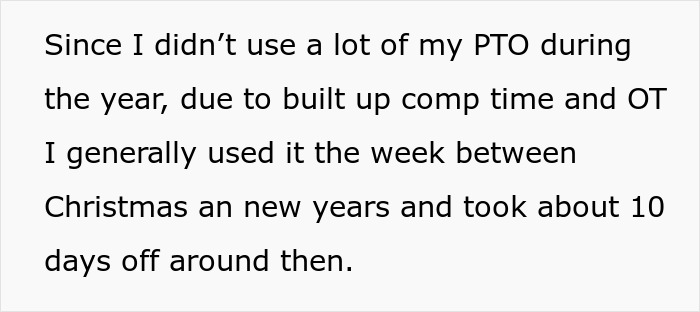



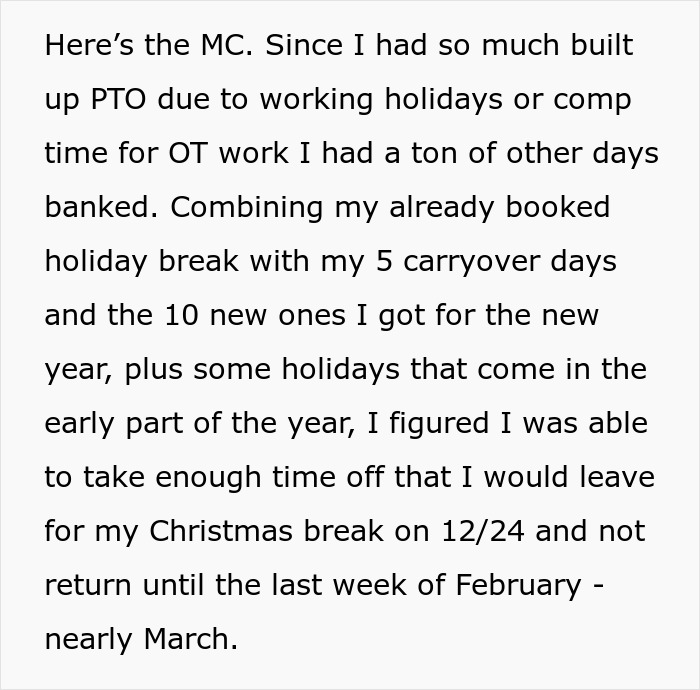

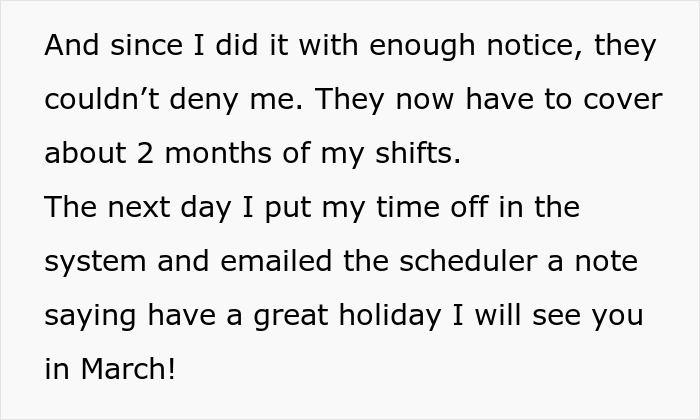

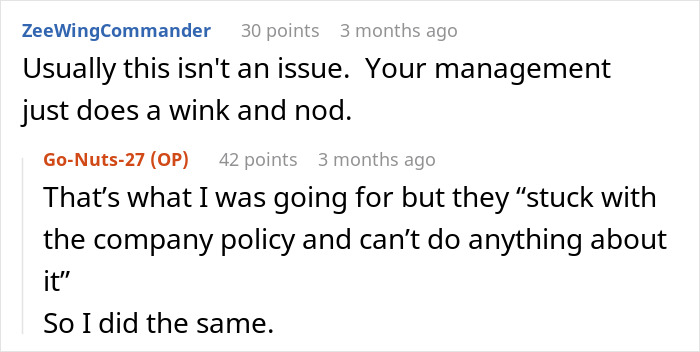
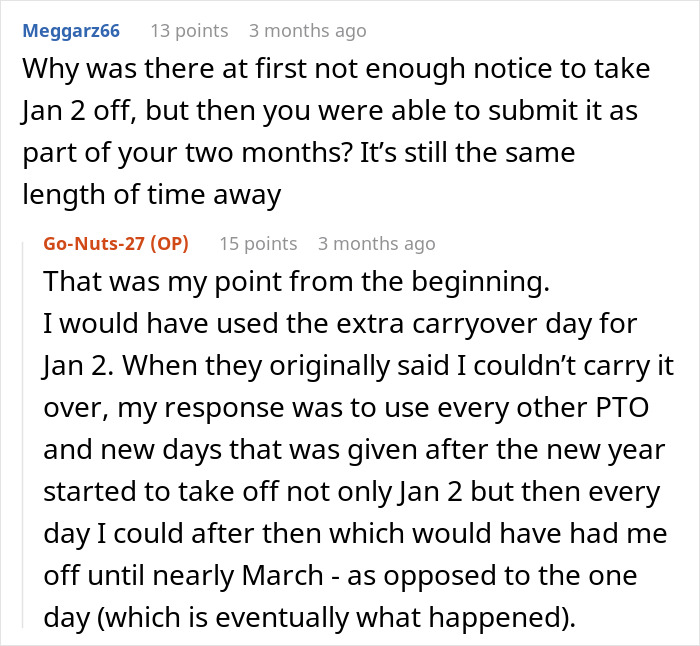

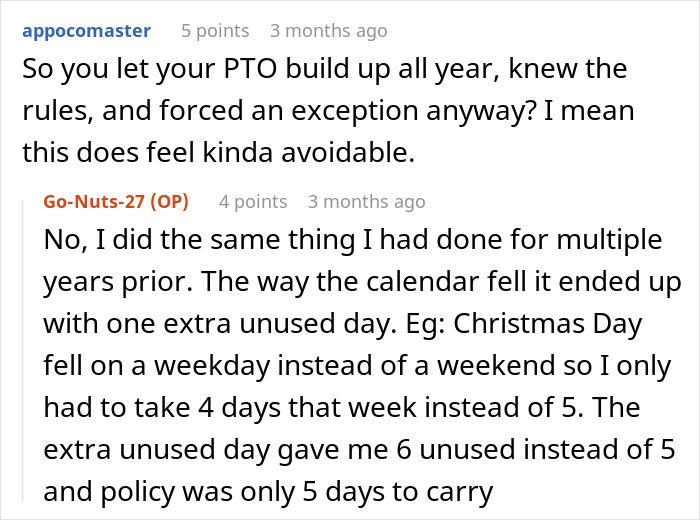



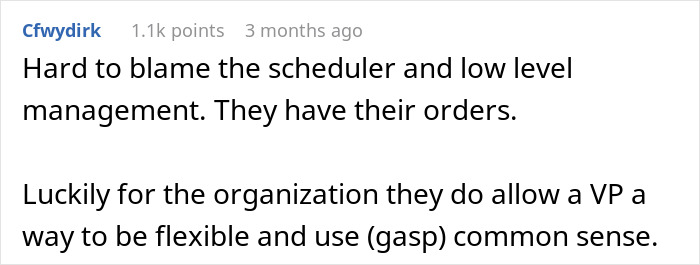
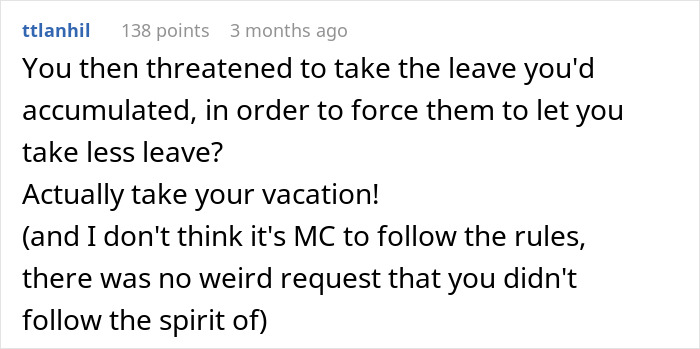
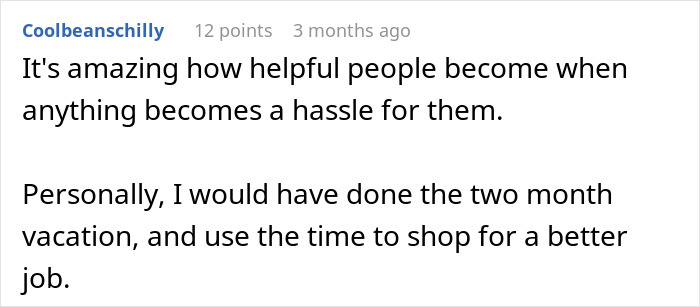
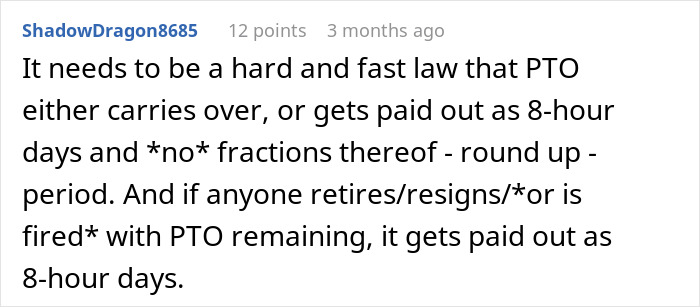
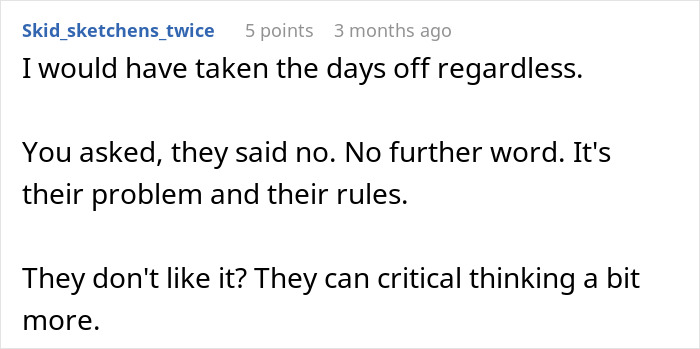




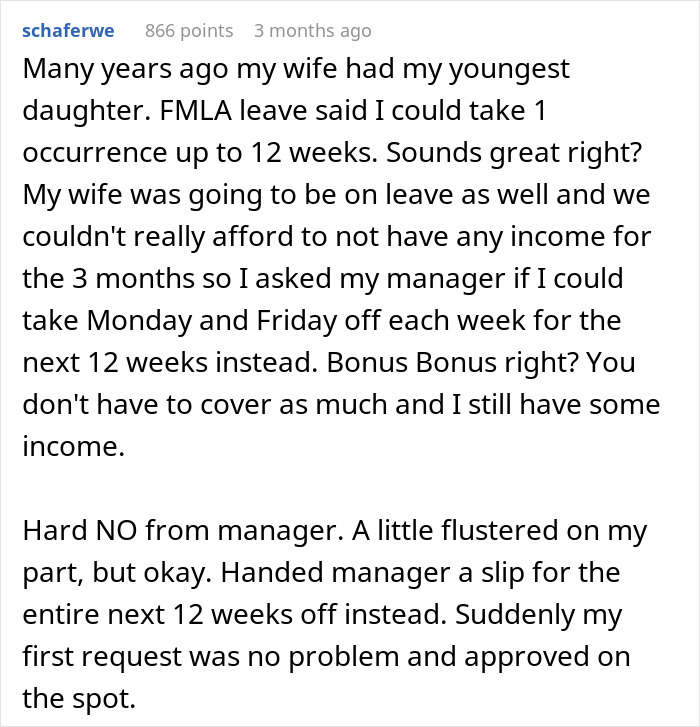
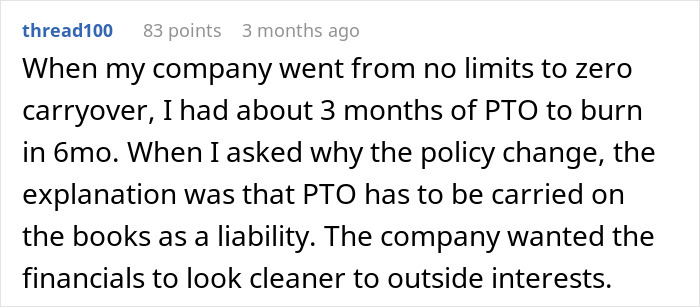
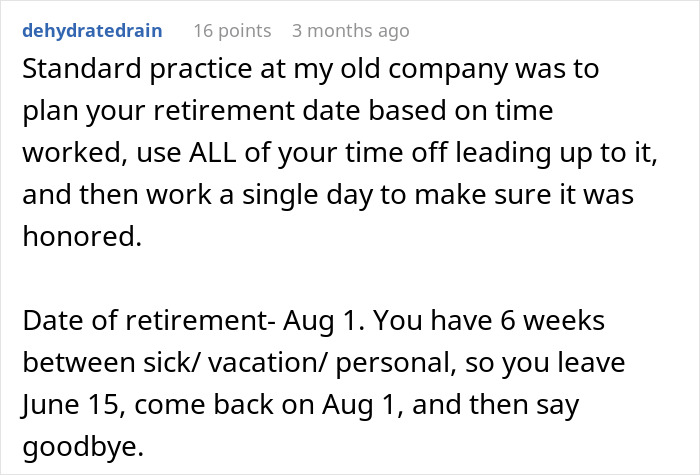












































49
6